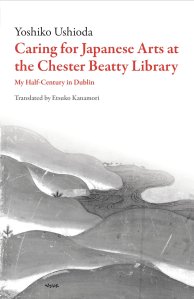I spoke at the 6th Mutual Images workshop on “Mediatised Images of Japan in Europe” at Cardiff University on the 1st May. The working title of the paper is “Bullshit journalism and Japan: English-language news media, Japanese higher education policy, and Frankfurt’s theory of ‘bullshit’”. It takes a look at a symptomatic case of English-language “bullshit journalism”: The improbable reports in the last half of September 2015 insinuating that the humanities and social sciences would virtually be abolished in Japan. It will be written up and submitted for pu blication soon. In the meantime, the draft is available on www.academia.edu. Click on the image or follow this link to listen to a podcast of the presentation in Cardiff.
blication soon. In the meantime, the draft is available on www.academia.edu. Click on the image or follow this link to listen to a podcast of the presentation in Cardiff.
The abstract is as follows:
The last sentence in Andersen’s fairytale There is no doubt about it reads: “It got into the papers, it was printed; and there is no doubt about it, one little feather may easily grow into five hens.” In September 2015 a process very similar to the rumour-mill in Andersen’s satire swept across the internet. An inaccurate – and on inspection highly implausible – report was picked up and amplified by several British and US news organisations. Thus an improbable claim about the Japanese government’s decision to effectively abolish the social sciences and humanities quickly became established as a morally reprehensible truth. Once the “facts” of the matter were reported by authoritative English-language media organisations, the outrage spread to other languages, and an online petition was launched to make the government “reconsider” a decision it had not taken. In light of the “misunderstandings” that had circulated in the foreign press, the Japanese Ministry of Education, Culture, Sports, Science and Technology eventually felt compelled to issue a statement, in English, to clarify that it had no intention of closing social science and humanities faculties.
What transpired in these transactions between Times Higher Education, Bloomberg, the Wall Street Journal, Time, the Guardian and other news outlets is of more than passing anecdotal interest. Consideration of the case offers insights into the dominant role of the English-using media in constituting Asia as an object of Western knowledge and of the part played in this by what Harry Frankfurt (2005) theorised as the sociolinguistic phenomenon of ‘bullshit’. The Times Higher Education article and the ones that followed were all examples of the ‘bullshit’ that arguably increasingly proliferates in both journalistic and academic discourse, especially when ‘circumstances require someone to talk without knowing what he is talking about’ (Frankfurt 2005: 63).
The presentation will take the case of the purported existential threat to the social science and humanities in Japan to discuss wider arguments about the role of ‘bullshit’ in journalistic and academic knowledge production and dissemination about the non-Western world. ‘Bullshit’ is ‘produced without concern with the truth’, but ‘it need not be false. The bullshitter is faking things. But this does not mean that he necessarily gets them wrong’ (Frankfurt 2005: 47-48).




